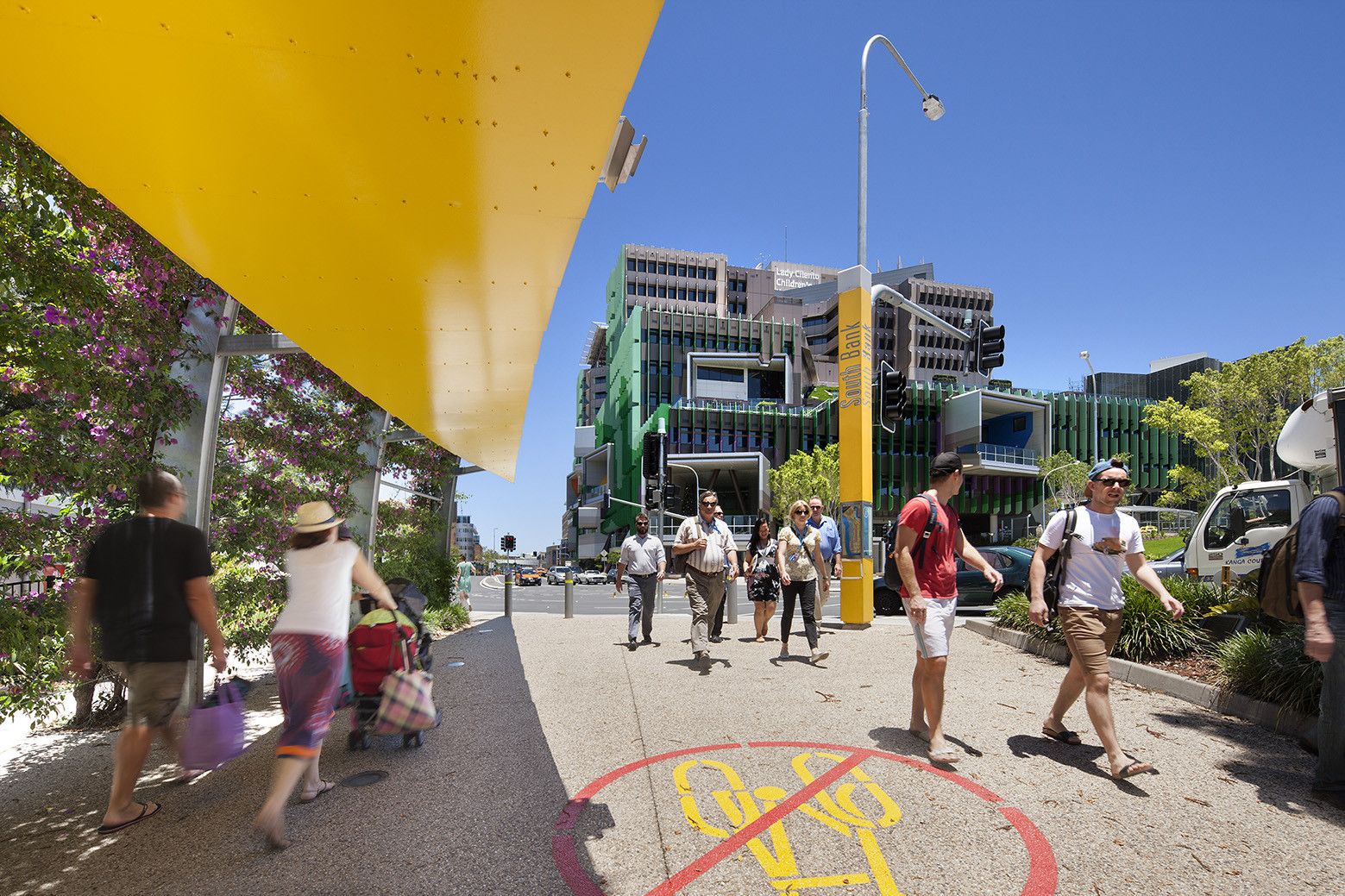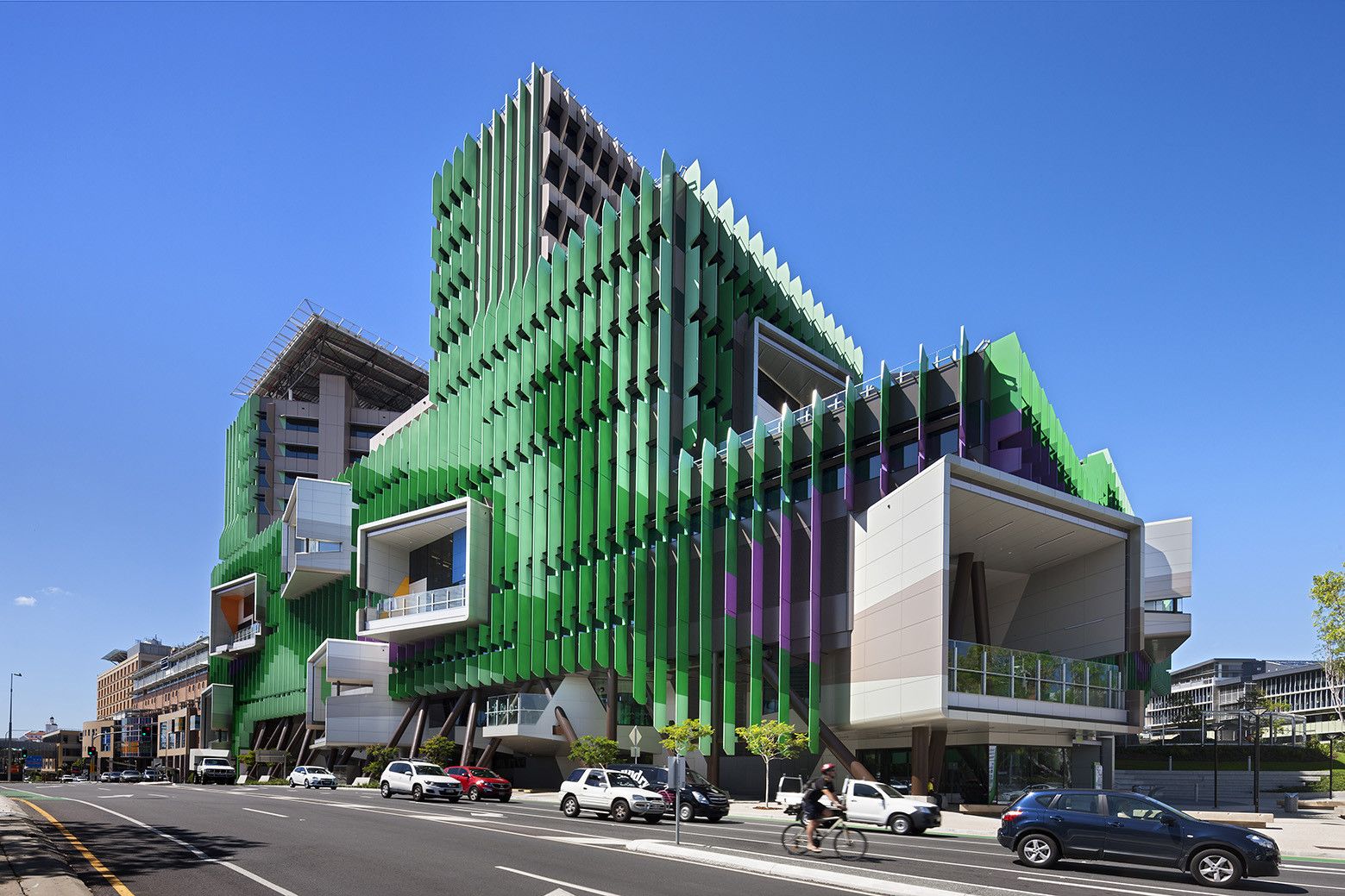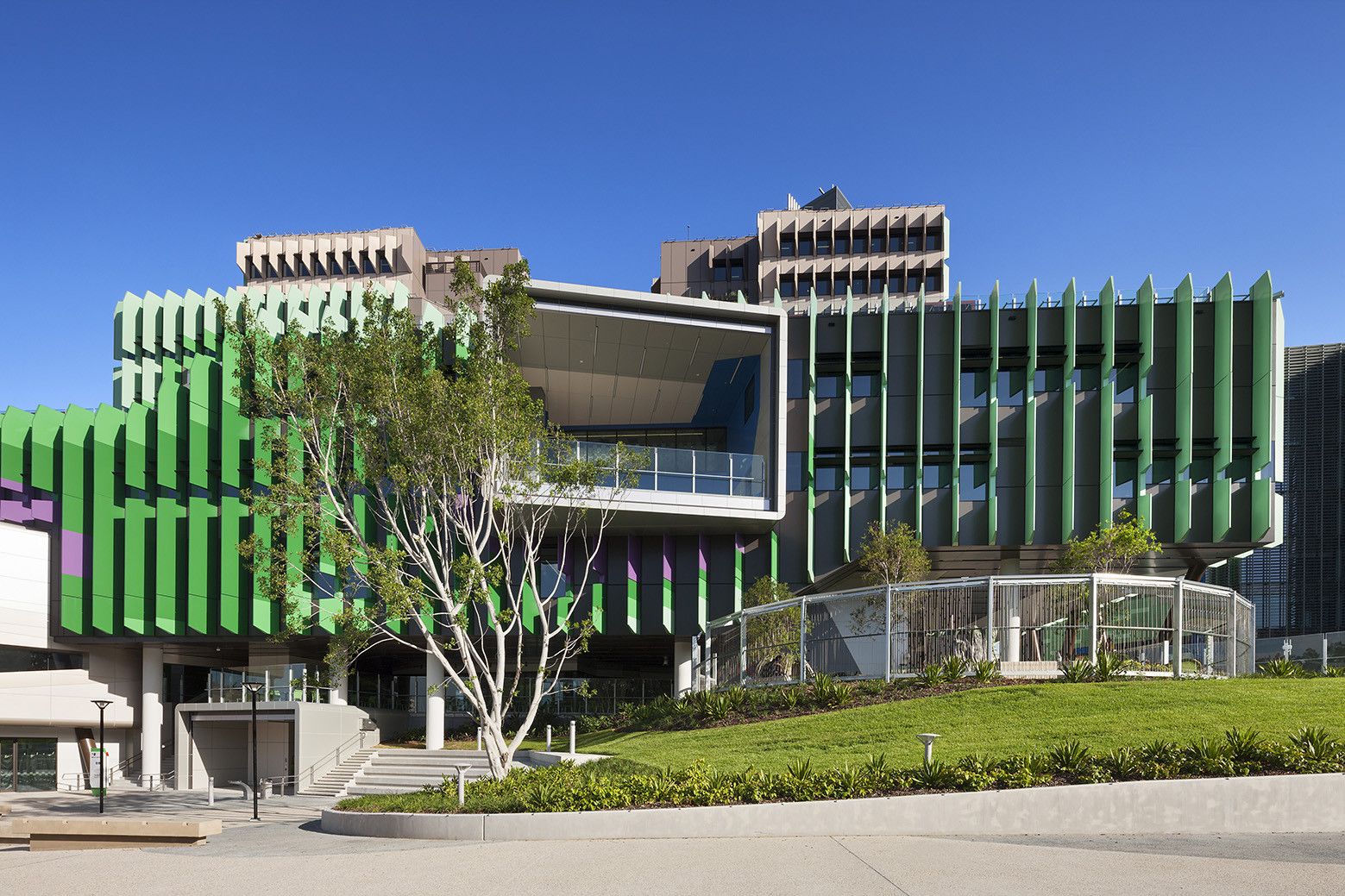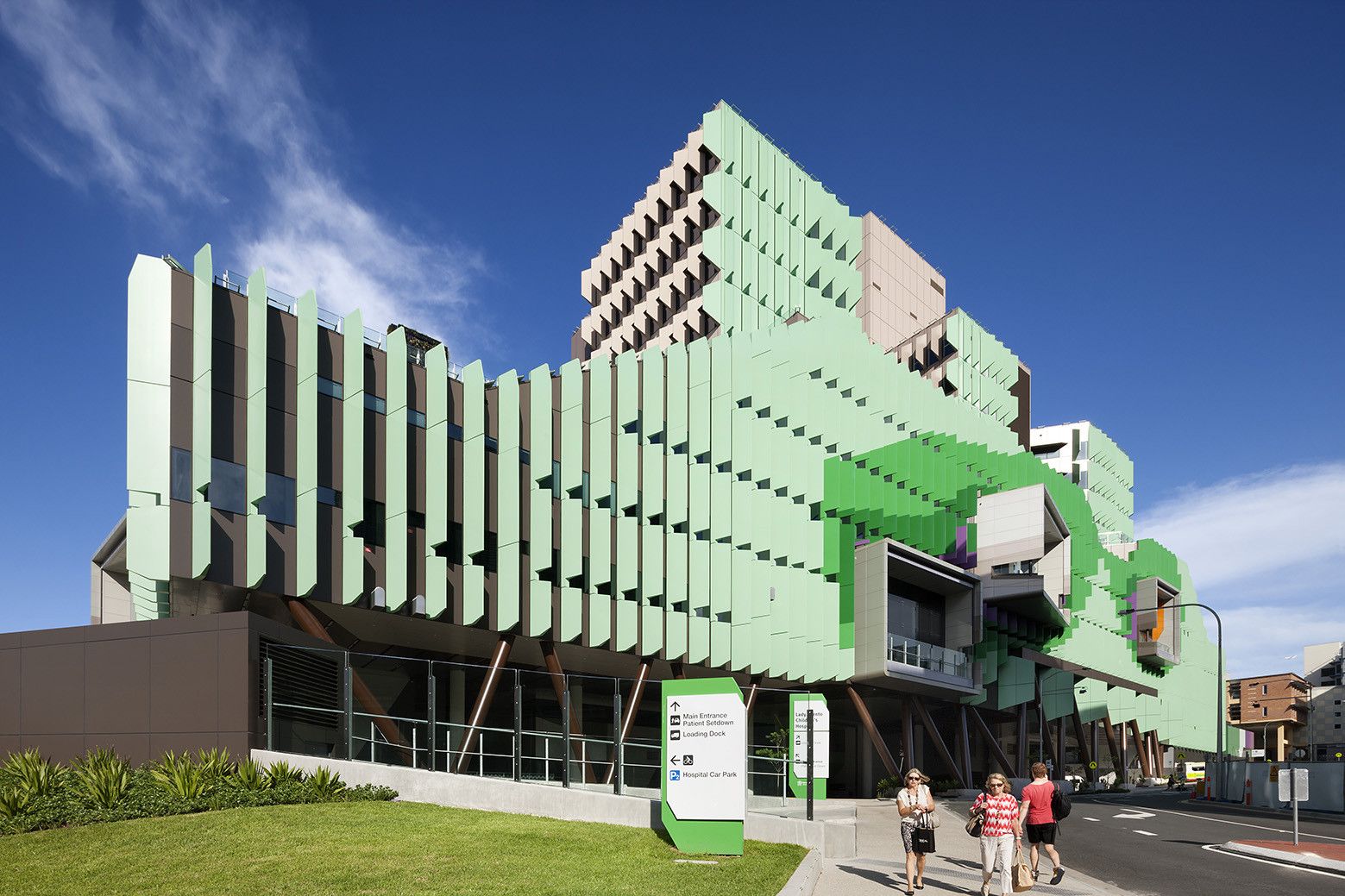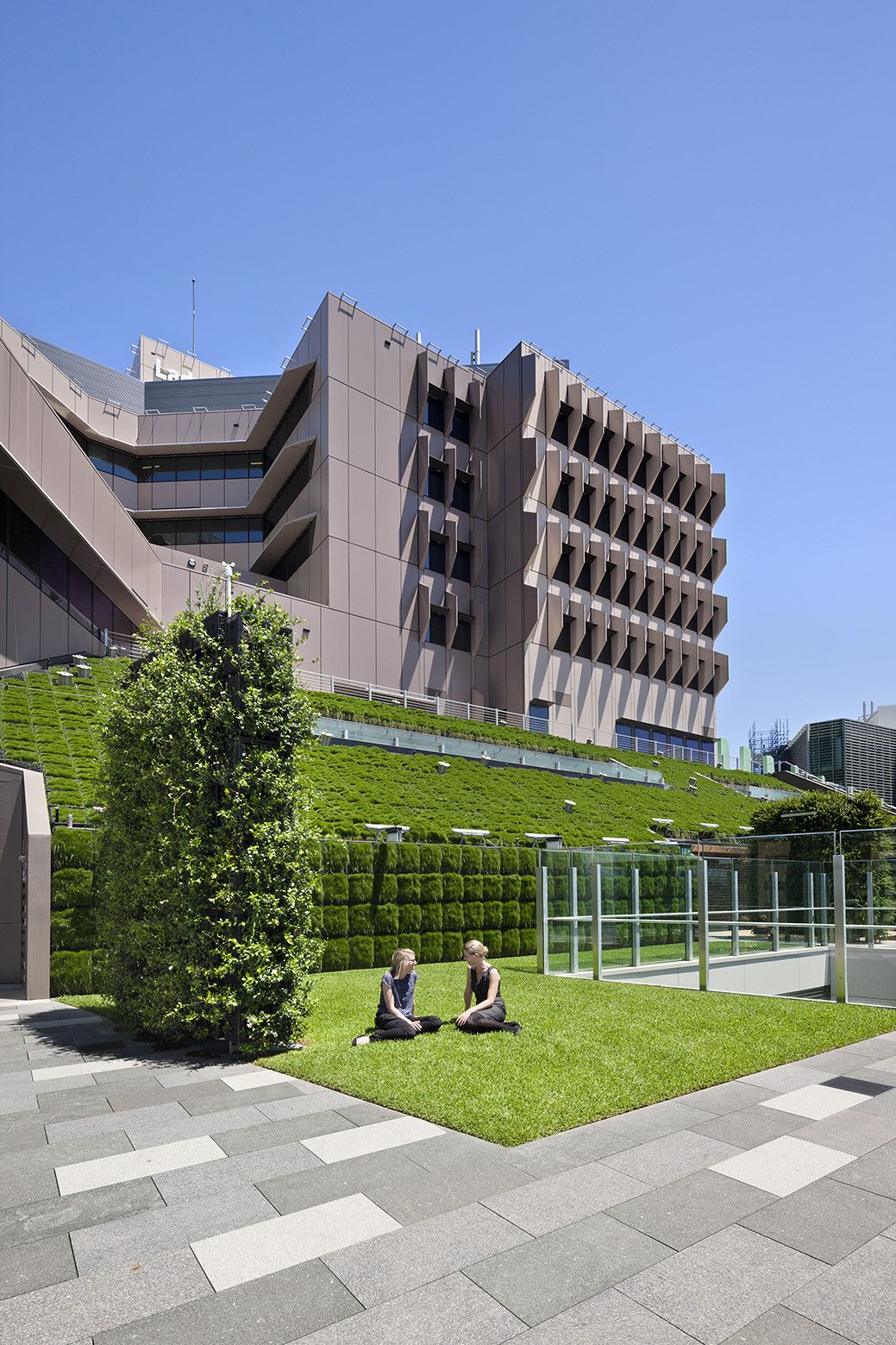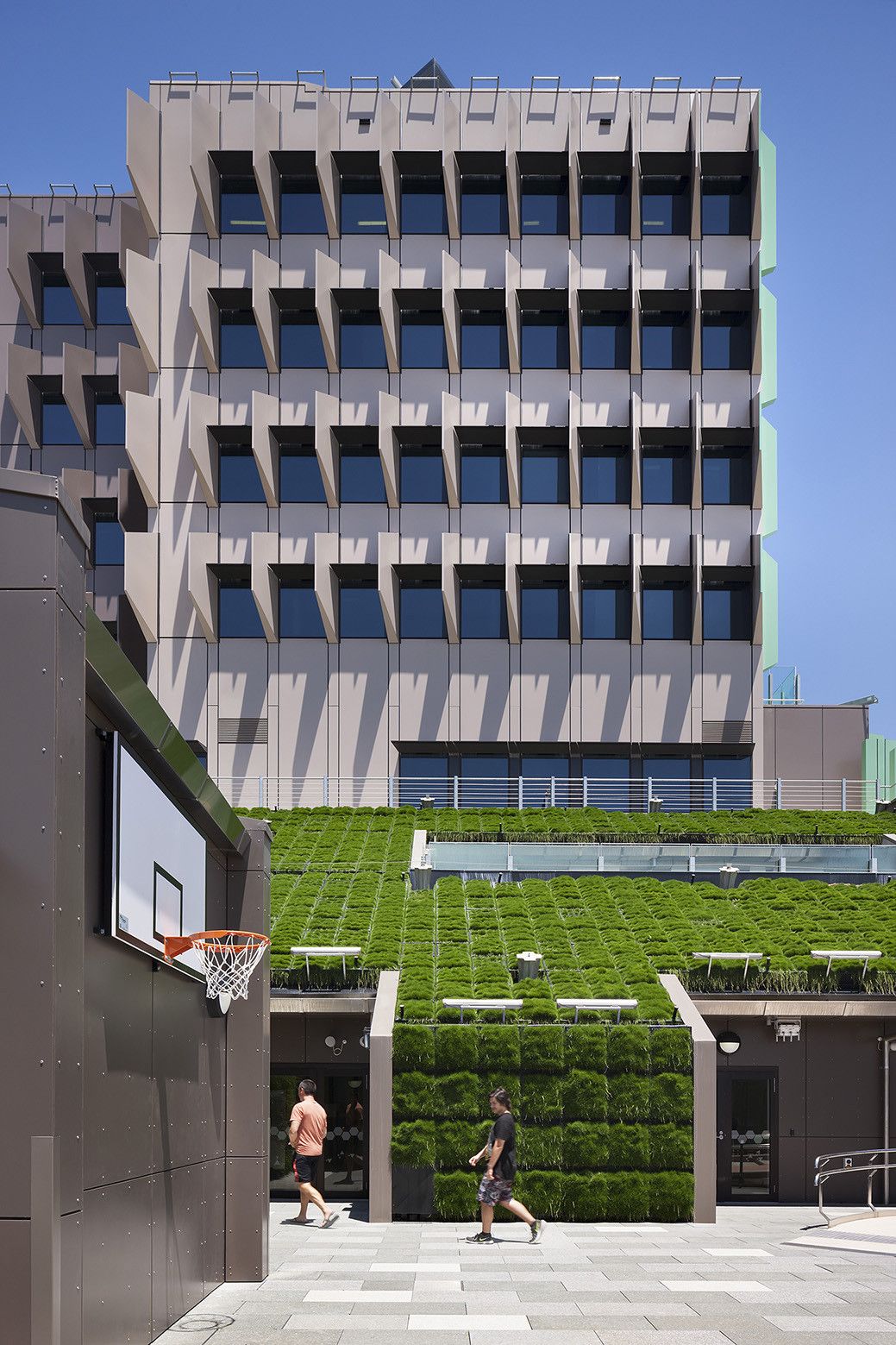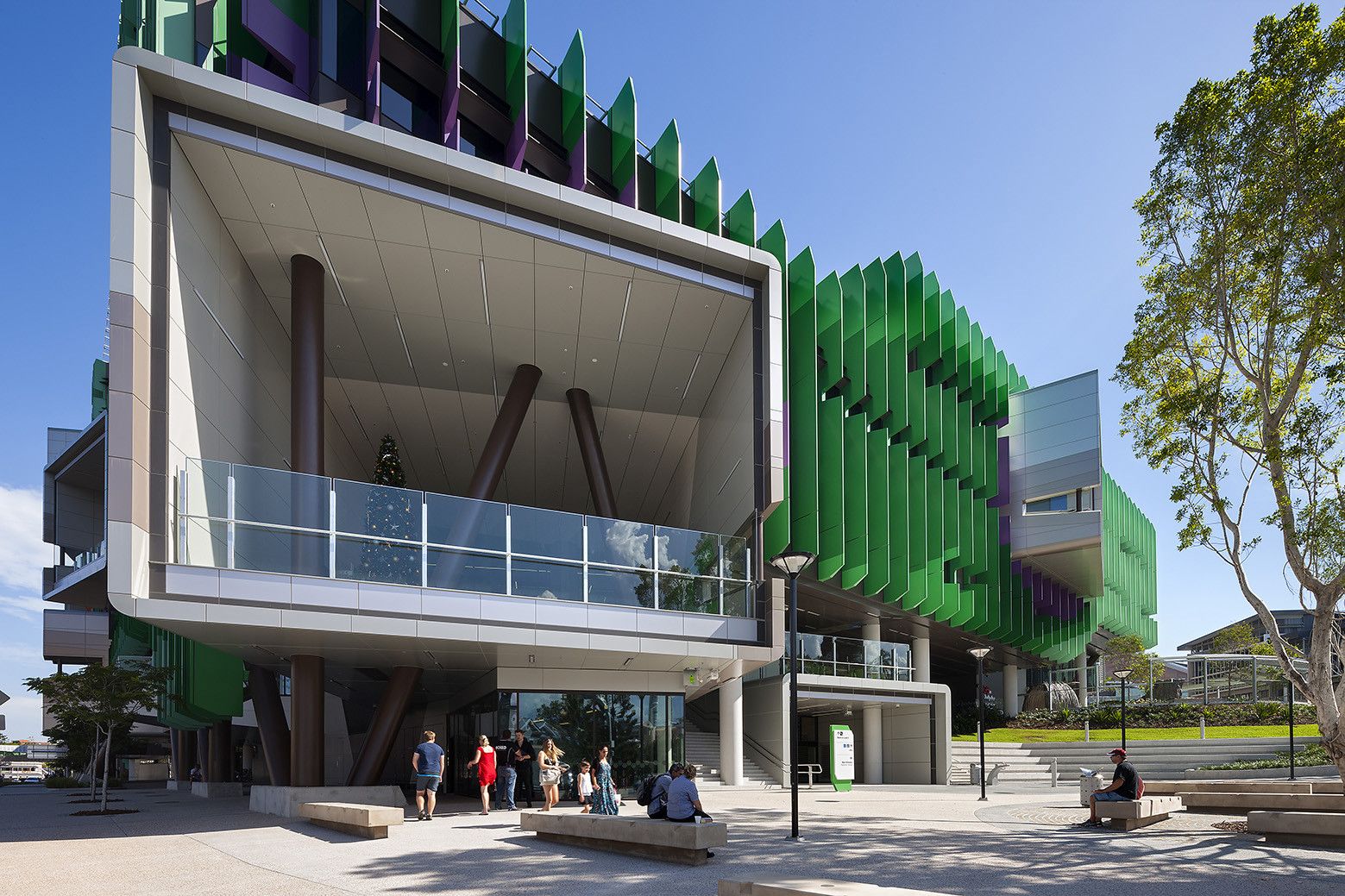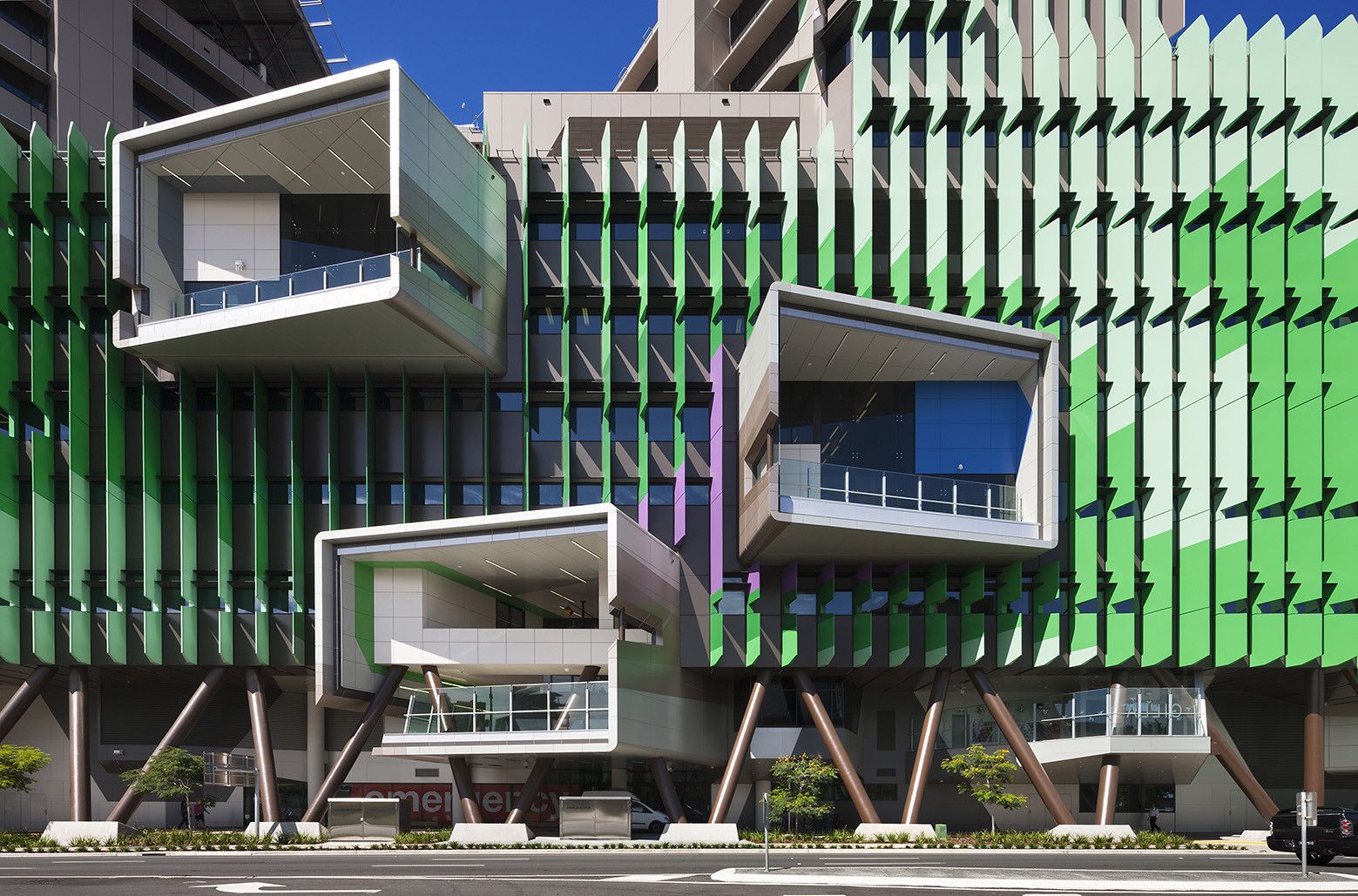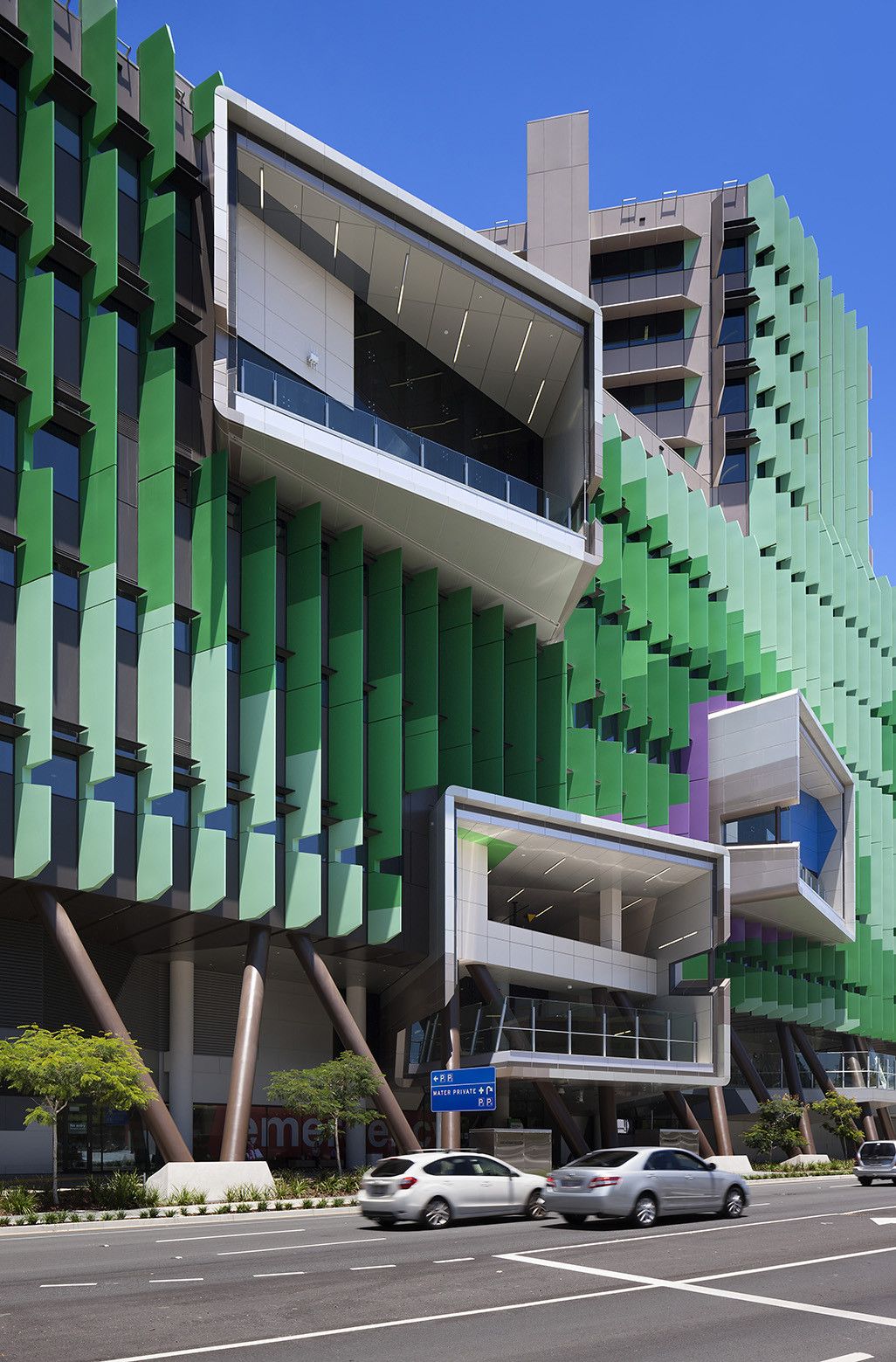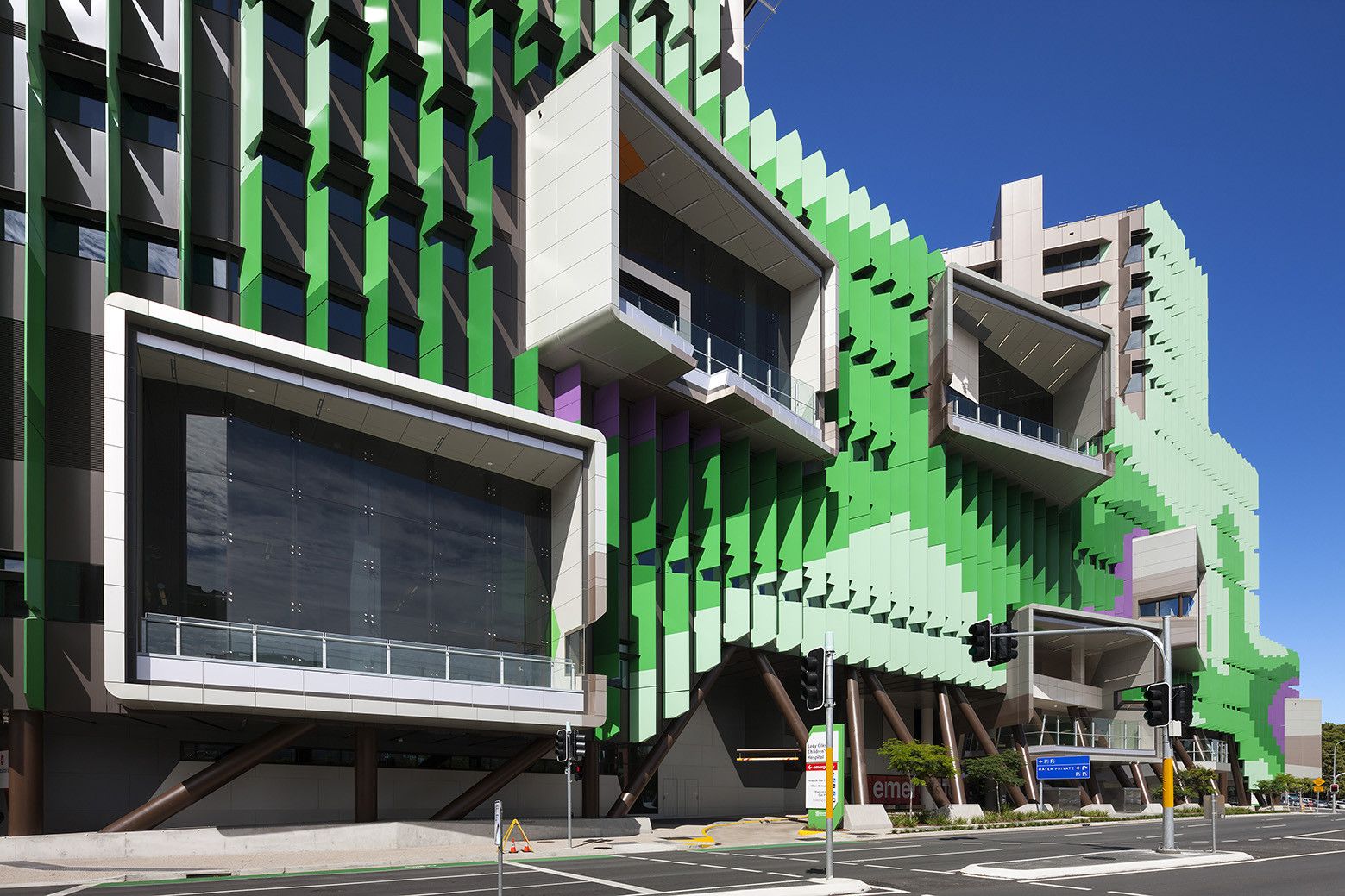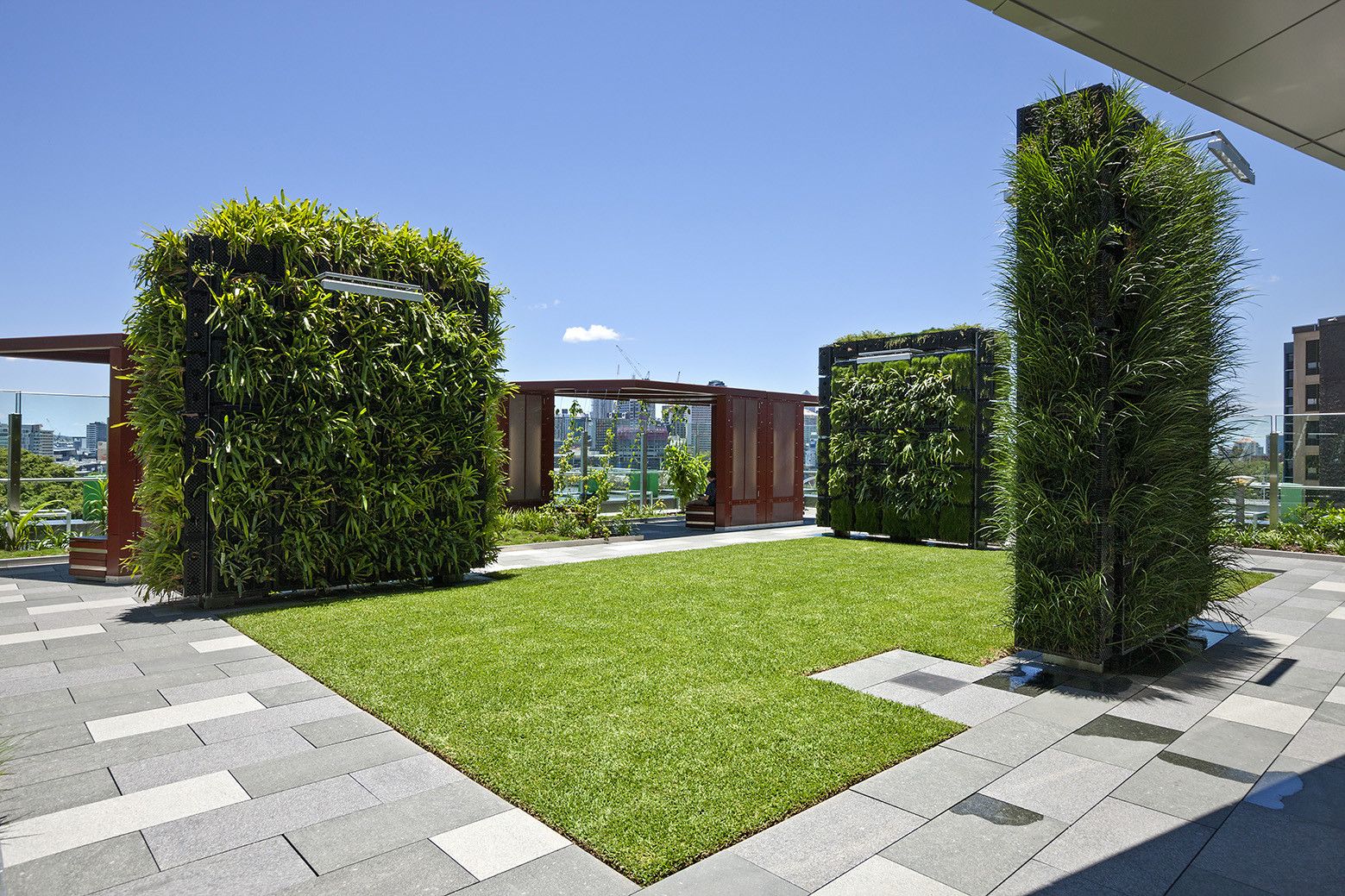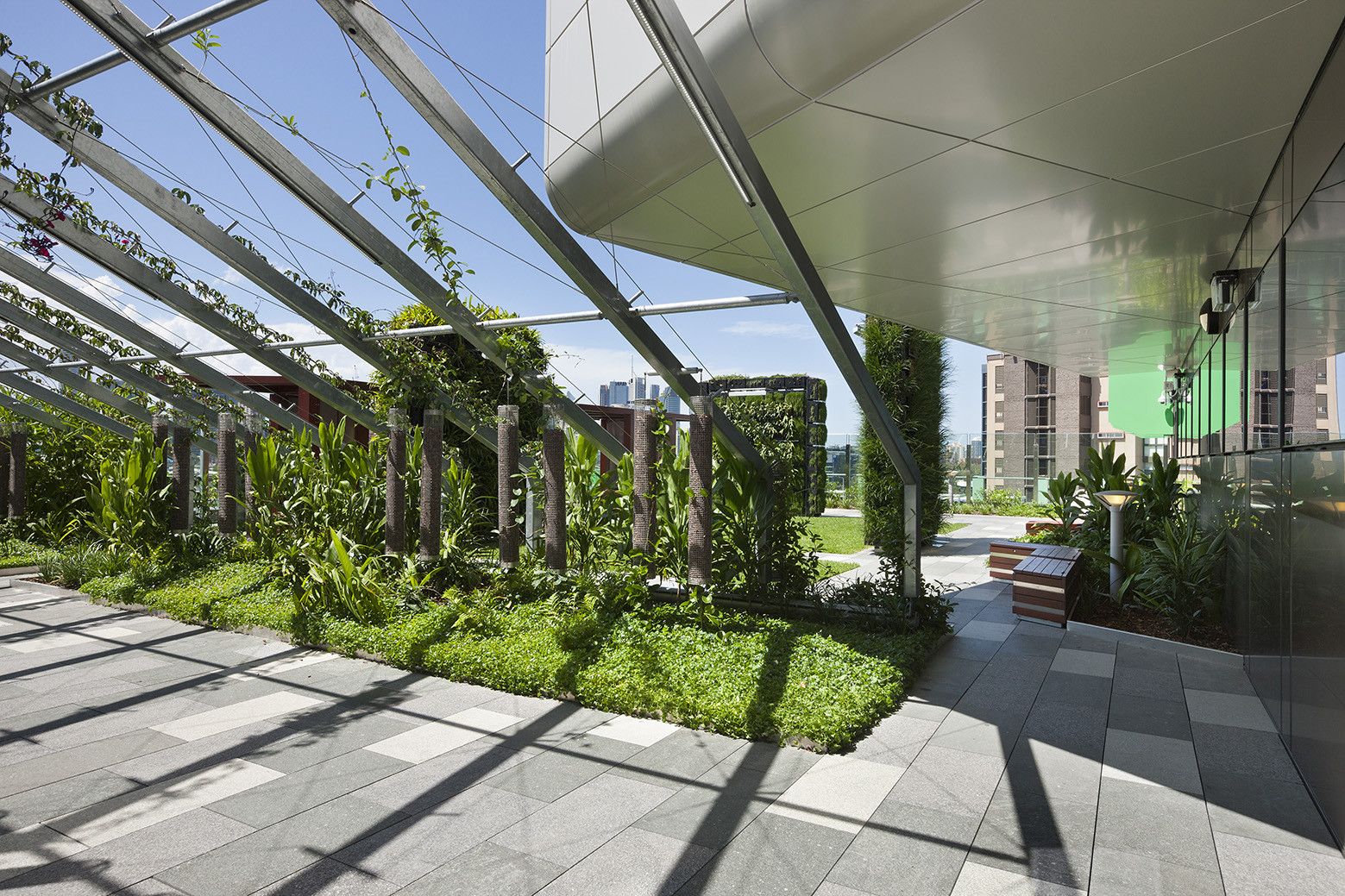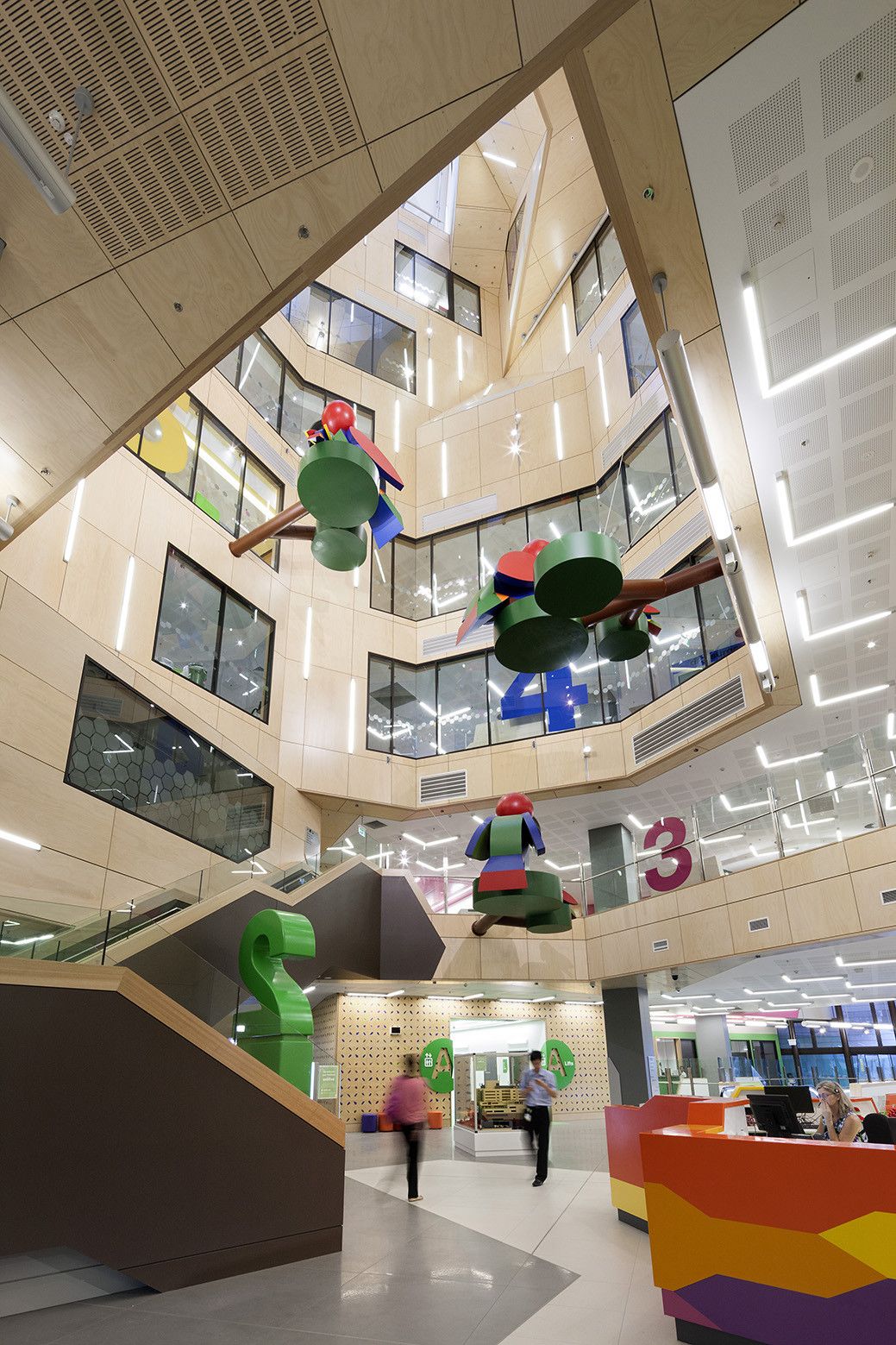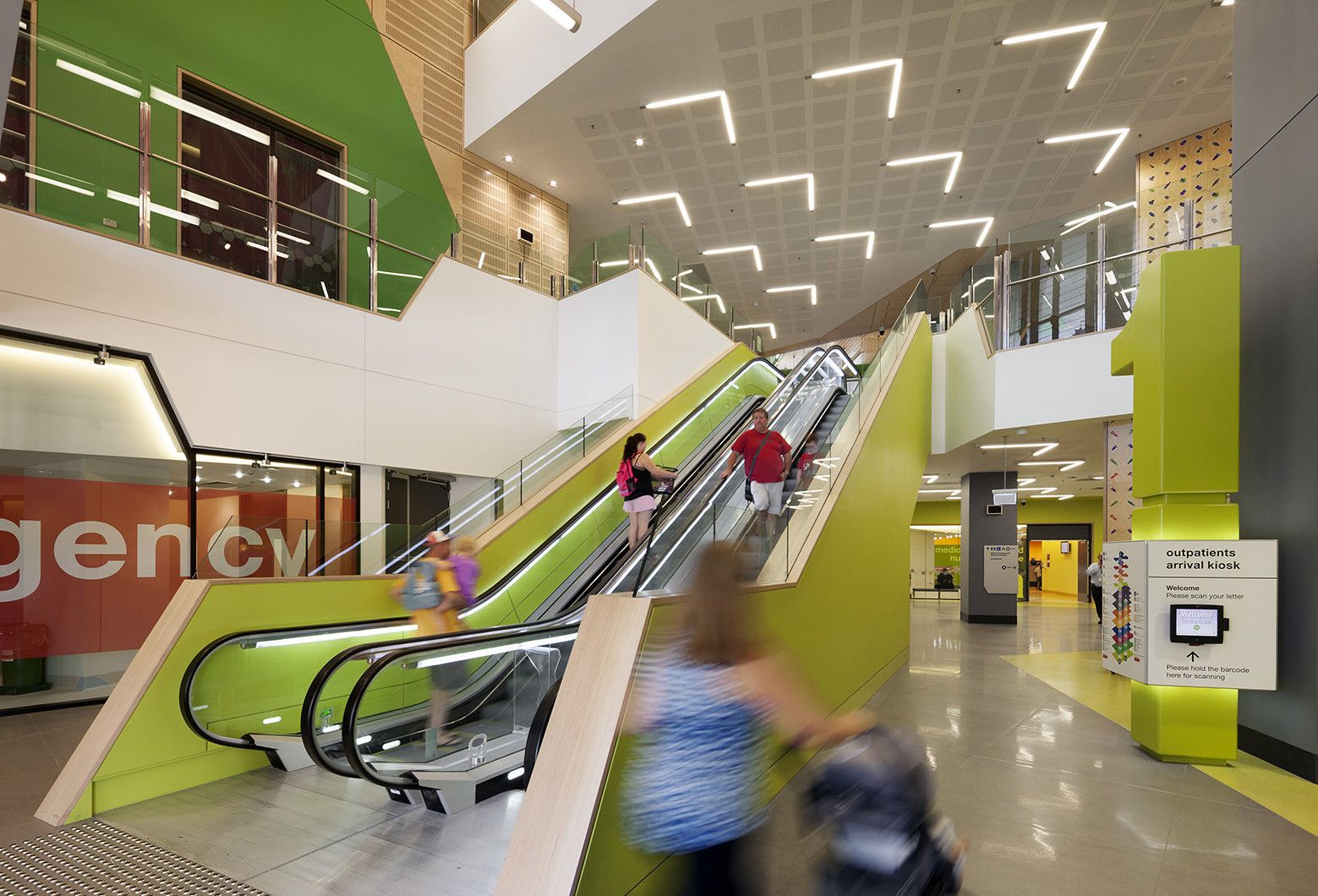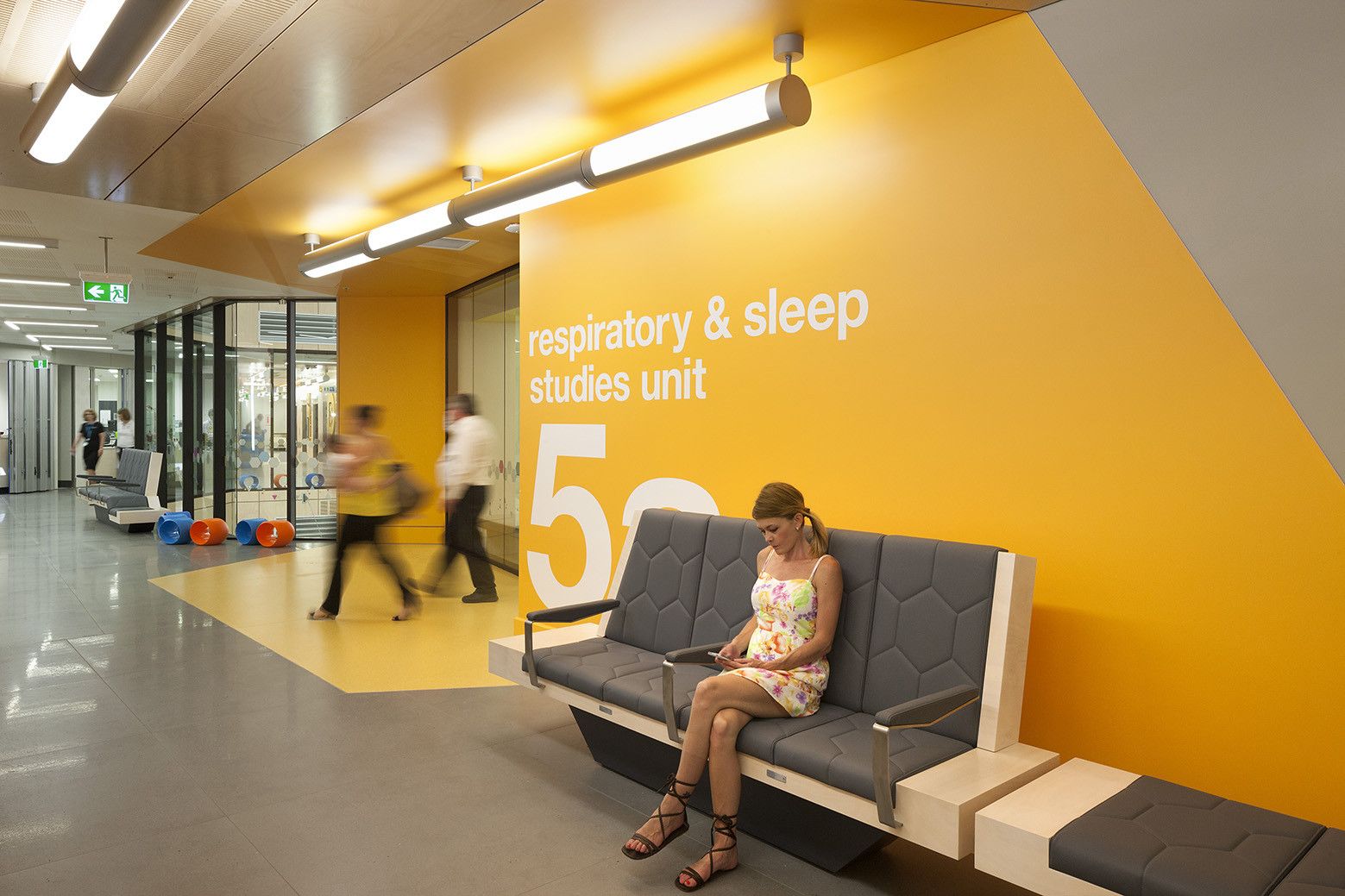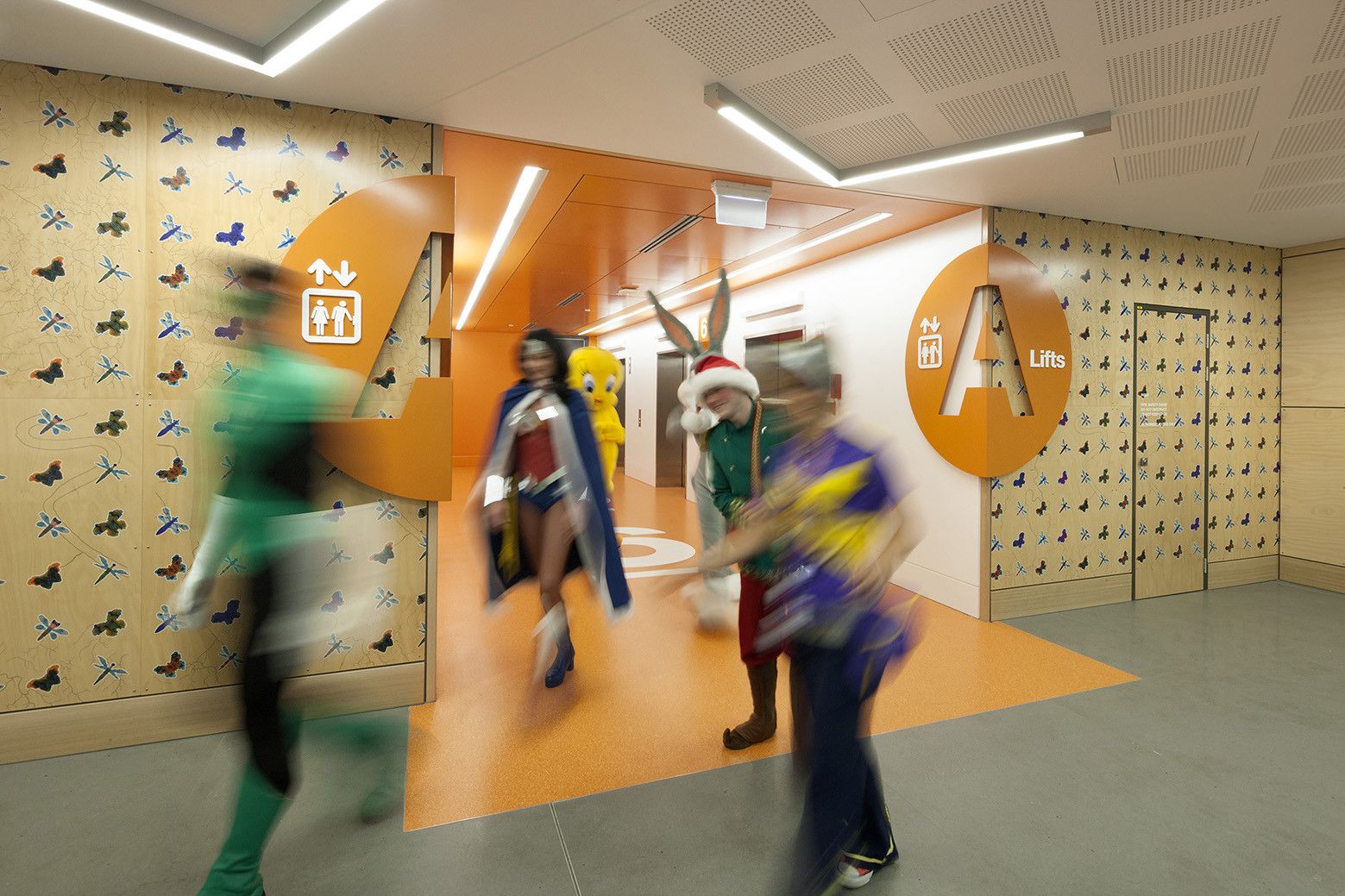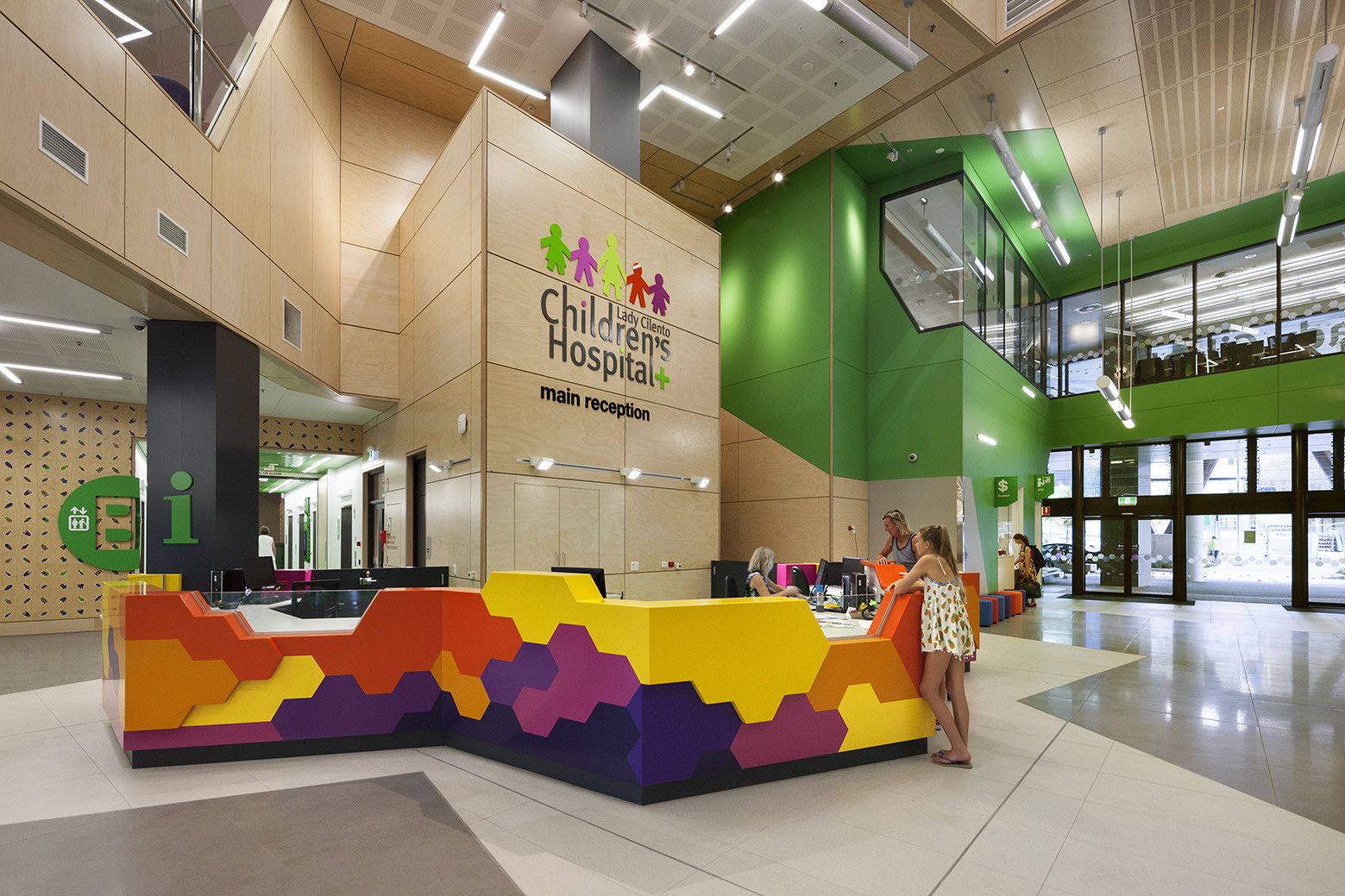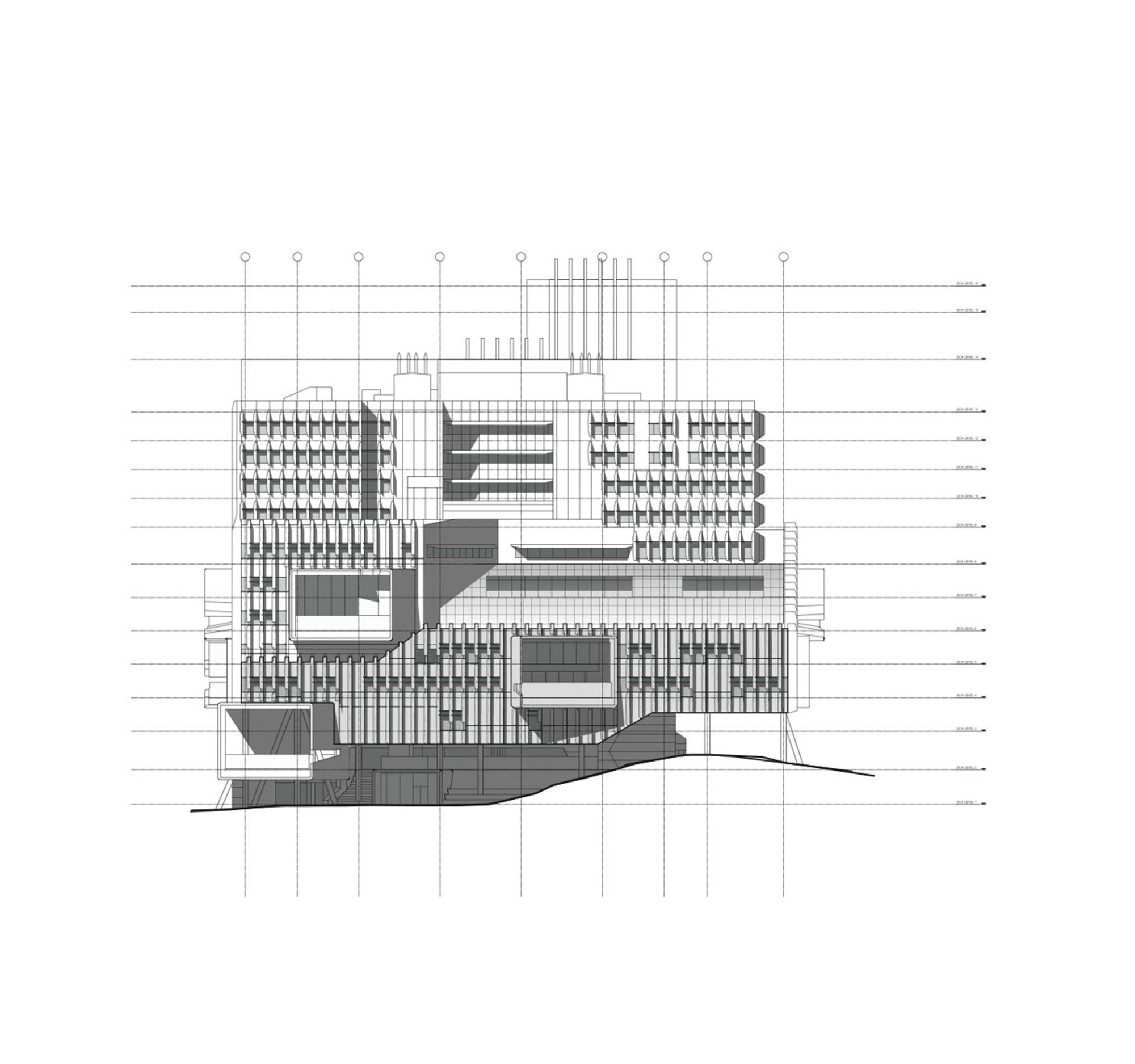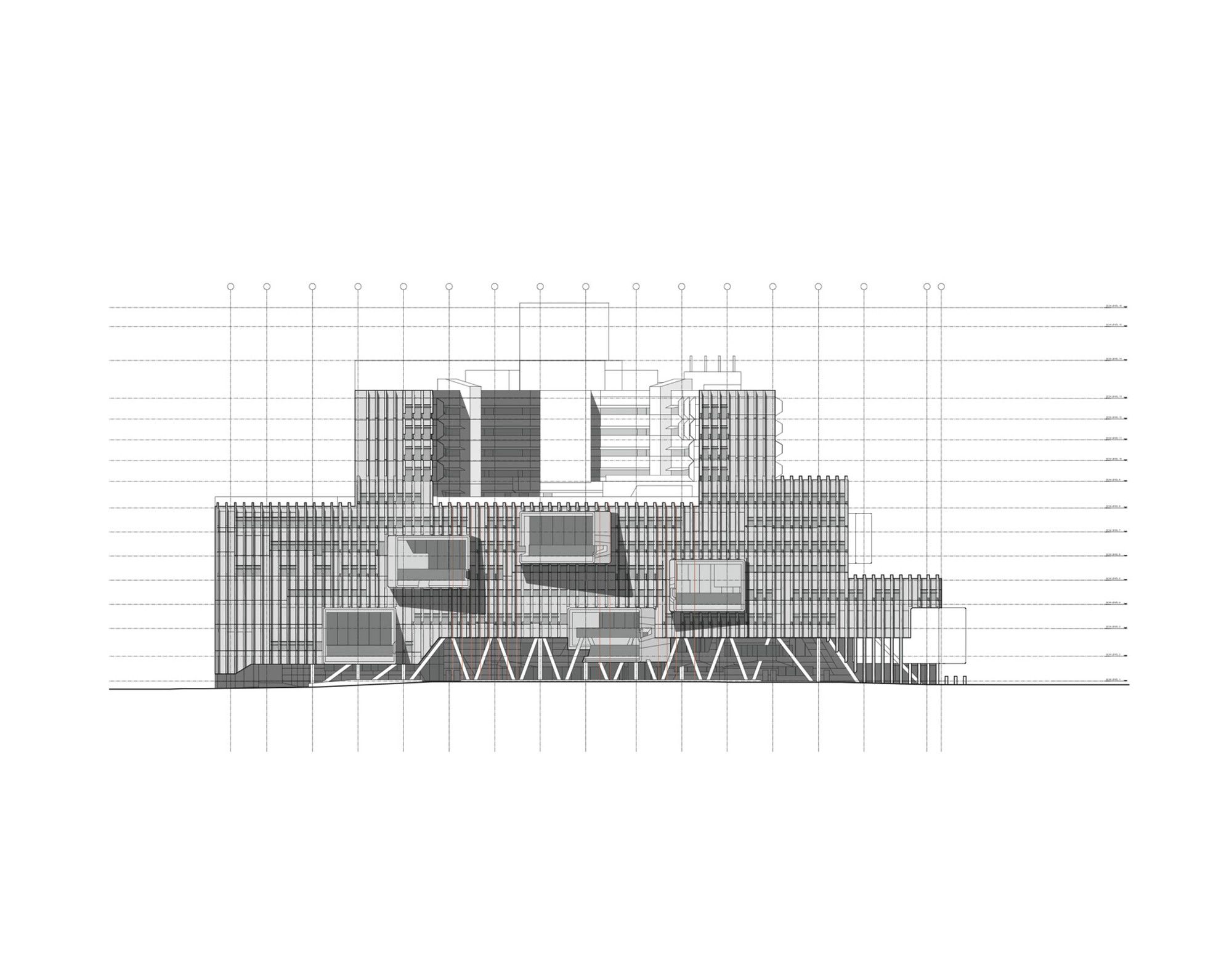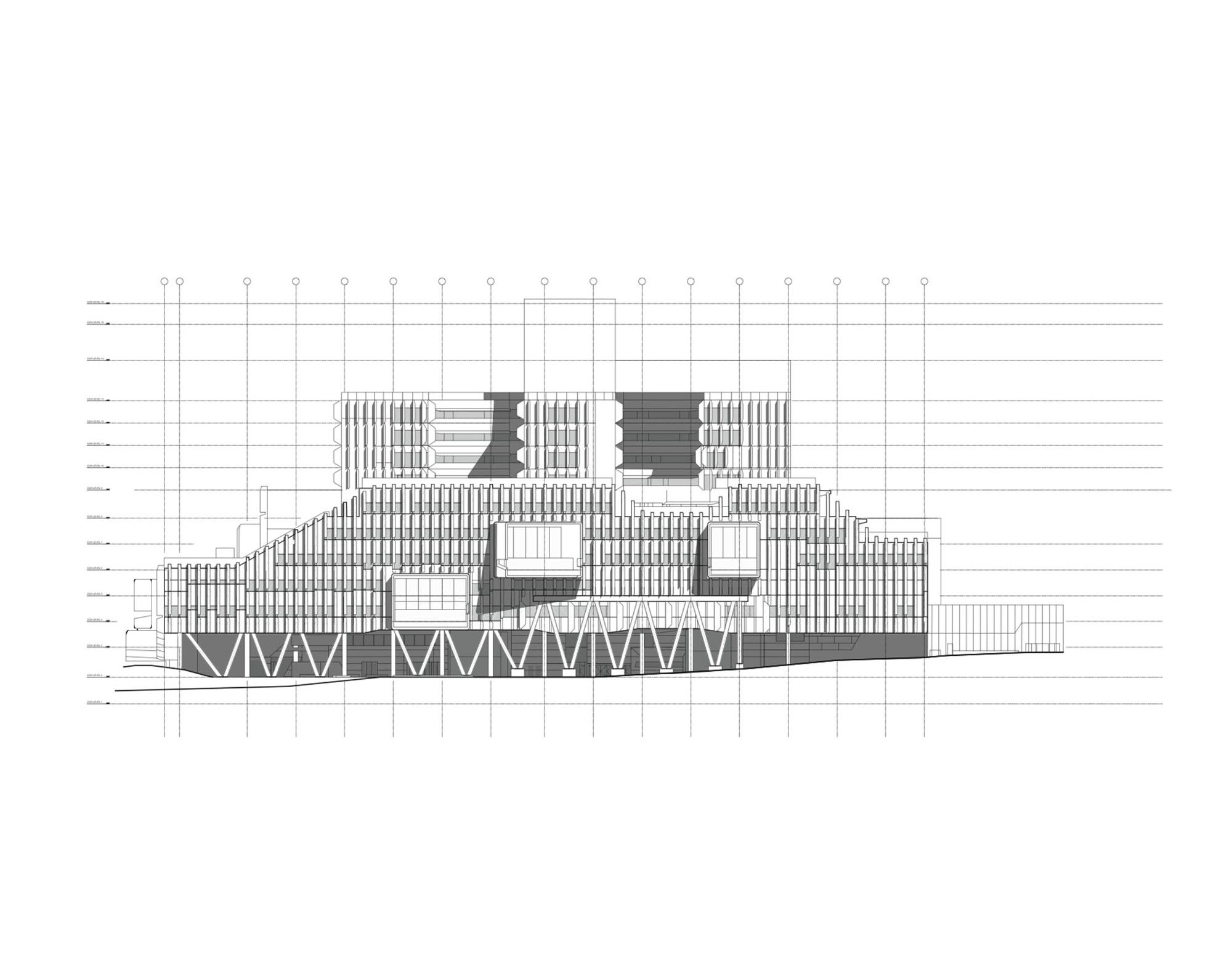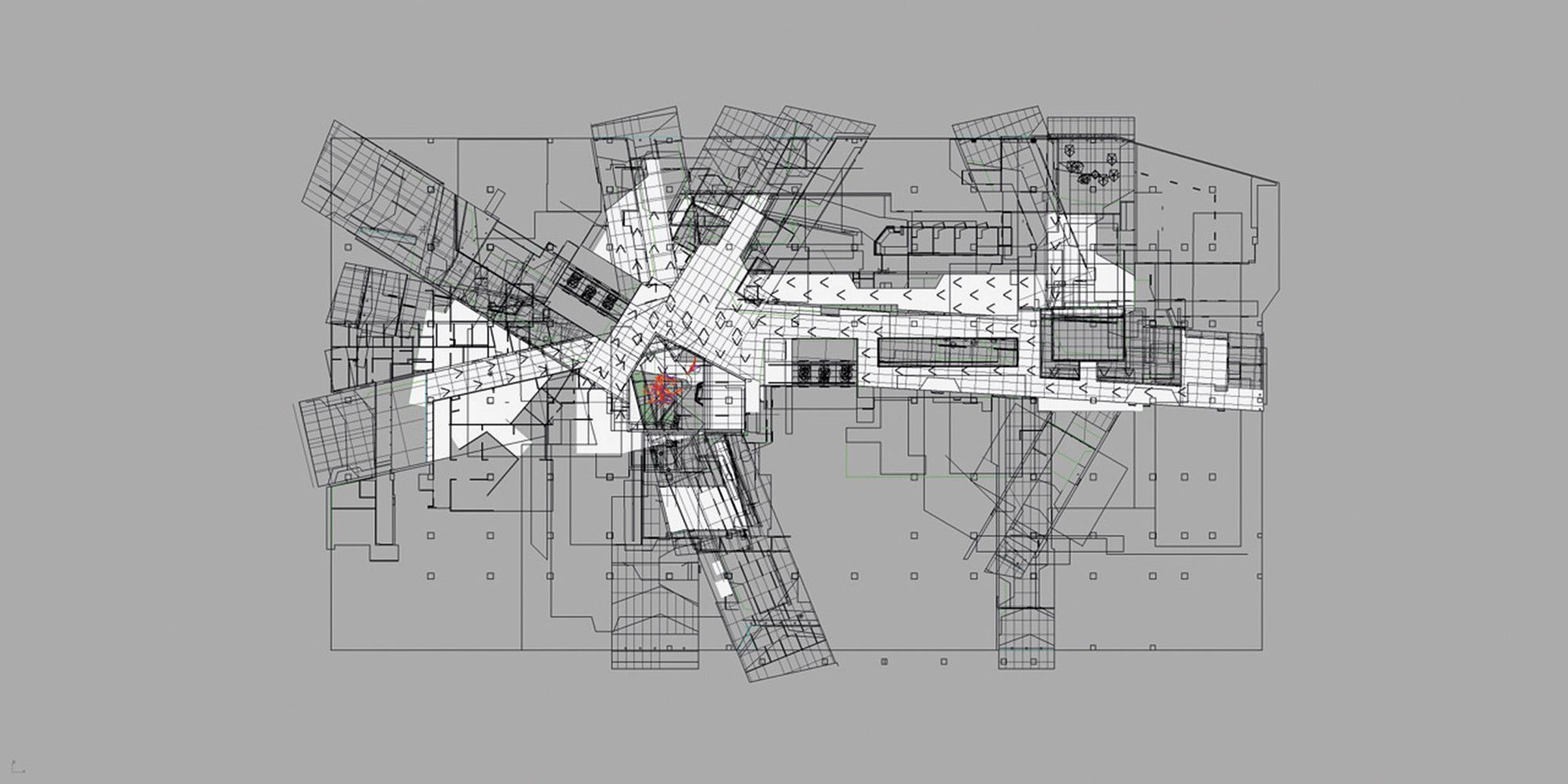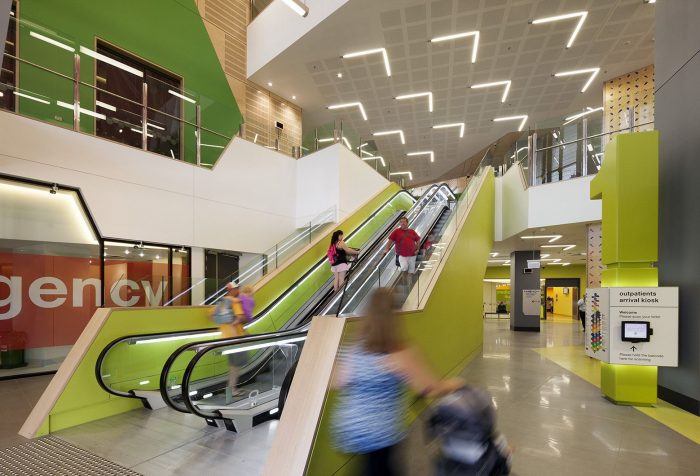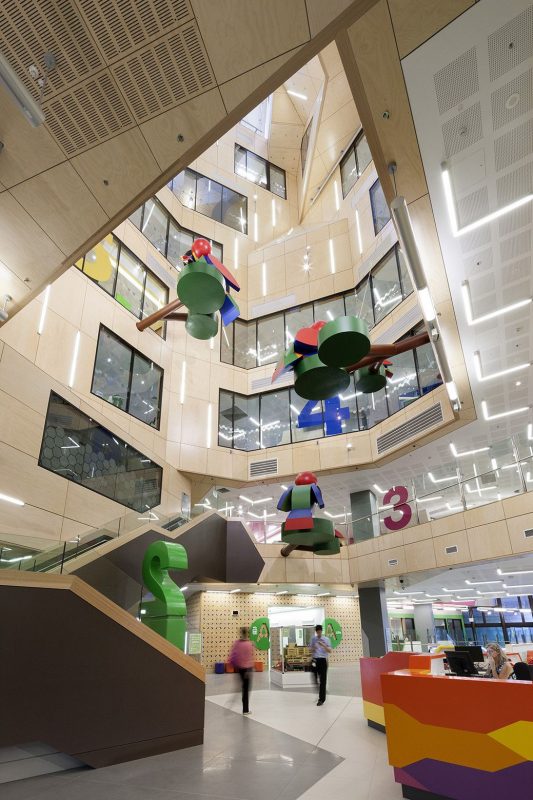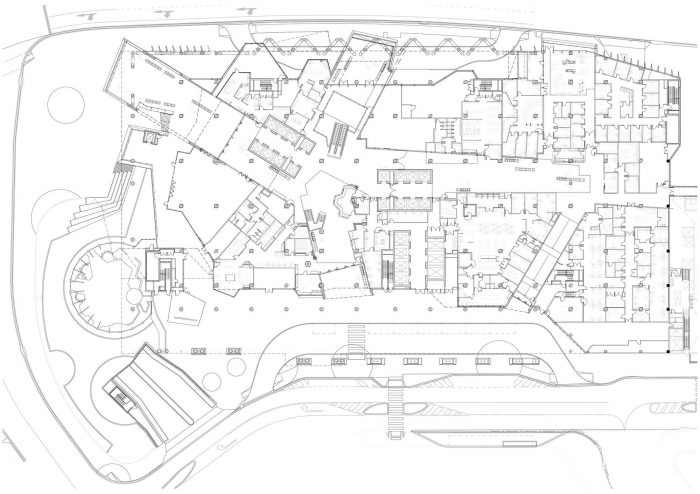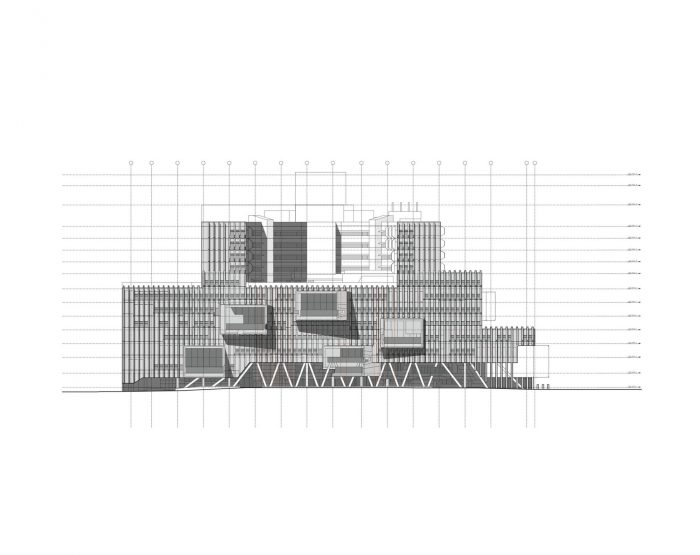Lady Cilento Children’s hospital
The “ Lady Cilento Children’s hospital ” in Australia has been completed by Melbourne Architectural and Urban design practice Lyons and Brisbane Architects Conrad Gargett.
This project is a 95,000 m² building with 12 floors that is a significant urban addition to Brisbaen’s southback precinct. The brightly colored exterior that incorporates green and purple colors that is common of native bougainvillea plantings in the adjacent parklands. In the form and massing, it tries to challenge the conventional model of podium and tower and delivers a medium-rise, sculpted structure with landscaped roofs.
‘Design work began with research into the genealogy and typology of the contemporary hospital. We studied hospitals from the 1980s though to the present-day and saw these as being largely functionally driven and medico-centric in their planning’, says Corbett Lyon of Lyons, design director of the work. ‘the queensland project was an opportunity to contest these prevailing paradigms; to radically rethink both the care model and the way in which the building might contribute to the city as a civic marker and as a touchstone for the Brisbane community’.
The concept is based on the idea of a ‘living tree’. ‘this parti was developed in the early planning stages through a series of workshops with the hospital’s users and stakeholders’, say Lyons.
A network of double height spaces (branches) radiate from two vertical atria (trunks) in the center of the plan. The branch areas extend beyond the street lines to form a series of framing portals and external balconies where users can view the city. Each portion is directed towards a key landmark in the surrounding context. The volumes also serve to connect inside and outside and supply natural daylight. The vertical and horizontal spaces in the synthetic plant form comprise the principal public circulation system. They create a mind map for the building and the framed metropolis icons are used as a means of orientation.
The architects used a ‘salutogenic’ approach, incorporating strategies which research has shown to directly support patient health and wellbeing; attributes such as clear way finding, connections to the outside, views of nature and providing a green and sustainable environment for patients and staff. Access to green space is a key element of the design, these spaces: rooftop gardens, green walls, enclosed courtyard gardens and views can be found surrounding all parts of the hospital providing a healing environment. The patios on the upper levels are used by patients, families, and staff for passive and active recreation and are also used as part of the rehabilitation programs.
